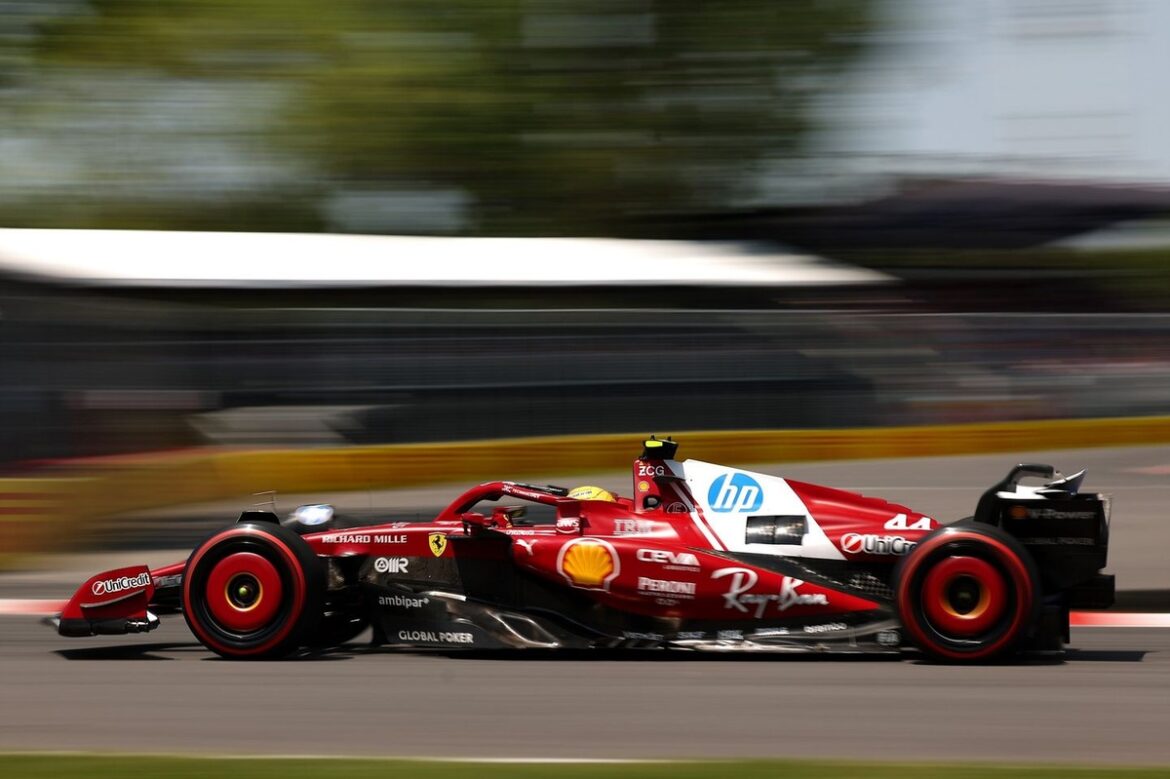Pirelli’s C6 Tyre: An Analysis of Performance and Strategy in Formula 1
The introduction of Pirelli’s new C6 tyre during the Emilia-Romagna Grand Prix has sparked considerable debate within the Formula 1 community. As the tyre supplier for the sport, Pirelli is committed to offering six dry-weather compounds, yet they have acknowledged that certain performance characteristics of the C6 need refinement. Particularly, the expected improvement in lap times compared to its predecessor, the C5, which was the softest tyre in the lineup, has not met all expectations.
Understanding the C6 Compounds
Mario Isola, Pirelli’s motorsport director, explained that the C6 compound is designed to perform effectively under specific conditions. He noted that during the Canadian Grand Prix, the C6 showed promise, particularly during qualifying sessions. However, he also pointed out that the C6 behaves differently than the C5, leading teams to face challenges in fully grasping its performance capabilities.
Many drivers are more familiar with the C5 and find it more reassuring, which has contributed to the mixed feelings about the C6. While the C6 has the potential for better performance, accessing that peak can be tricky. Drivers need to find the optimal performance window, which can sometimes be elusive. As a result, the C6 has created a dichotomy where teams are still working to understand its full potential.
The Strategic Intent Behind the C6
Pirelli envisioned the C6 as the go-to tyre for qualifying sessions, allowing teams to utilize the harder and medium compounds during the race itself. This approach would encourage two-stop strategies, especially since the C5 often struggled with durability in previous races. By introducing the C6, Pirelli aimed to shift the strategic landscape of races, promoting varied strategies over the course of a Grand Prix.
However, feedback from drivers revealed a different narrative. Many expressed concerns that the new tyres were too sensitive, making it difficult to push the limits effectively. As a response, Pirelli worked on making this year’s tyre compounds less susceptible to thermal degradation. This adjustment has inadvertently allowed teams to lean towards one-stop strategies, which could lead to less dynamic racing.
Challenges Encountered with the C6
Several races have turned into processional events, partly due to the unexpected challenges posed by the C6. In its debut, many teams found that they were not able to achieve faster lap times compared to the C5. This was attributed to their inability to reach the performance peak of the C6, or the peak being short-lived, followed by a rapid decline in performance.
Furthermore, some drivers reported feeling disoriented by the feedback from the C6 as it heated up during races. This led several teams to revert to the more familiar C5 in qualifying sessions, as seen in Imola and again in Montreal.
Isola noted that in Canada, drivers opted for the C5 during qualifying due to the comfort and confidence it provided. This decision significantly impacted race strategies, as teams came prepared with a different mix of tyre compounds. By qualifying with the medium, for example, teams could bring a wider range of tyre options into the race, enhancing strategic flexibility.
The Implications of C6 Performance
While the C6 has not entirely fulfilled Pirelli’s initial expectations, it has influenced race strategies in notable ways. The tyre supplier considers any shift in strategy to be an achievement, even if it was not the original outcome envisioned. However, Isola also indicated that Pirelli is likely to reconsider its strategy of deploying the C6 for upcoming races, particularly in Singapore.
The unique challenges presented by the Singapore circuit, known for its aggressive nature, may necessitate a different approach. Pirelli is evaluating the viability of using the C6 in future races, including the Las Vegas Grand Prix, where colder temperatures could impact performance.
Future Developments for the C6
For the C6 to effectively contribute to Pirelli’s aim of creating less predictable strategies and reducing the appeal of one-stop races, it must exhibit less sensitivity and demonstrate a clear performance advantage over the C5. Isola emphasized the need for a greater gap in performance between the two compounds. Currently, the difference is around two-tenths of a second, but the goal is to increase that to at least half a second.
In pursuit of this goal, Pirelli is actively working on developing a C6 that not only meets these performance benchmarks but also maintains a level of degradation similar to what is currently available. This would allow for a more diverse range of strategies, making races more exciting and engaging for fans and teams alike.
Conclusion
The introduction of the C6 tyre has undoubtedly changed the landscape of Formula 1 racing. While it has presented challenges, it also opens up new avenues for strategy and competition. Pirelli’s commitment to refining the C6 and responding to feedback from teams and drivers exemplifies their dedication to improving the sport. As the 2023 racing season unfolds, it will be fascinating to see how these developments influence future races and the strategies teams adopt moving forward.
